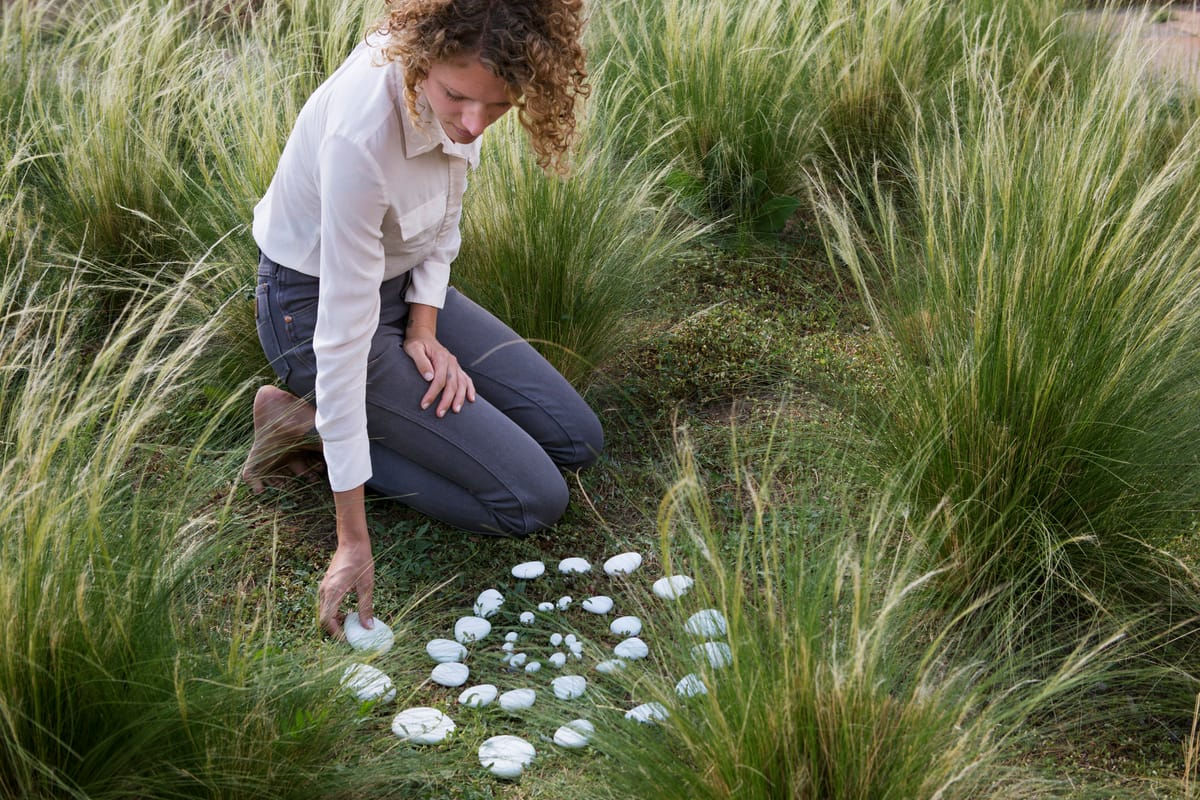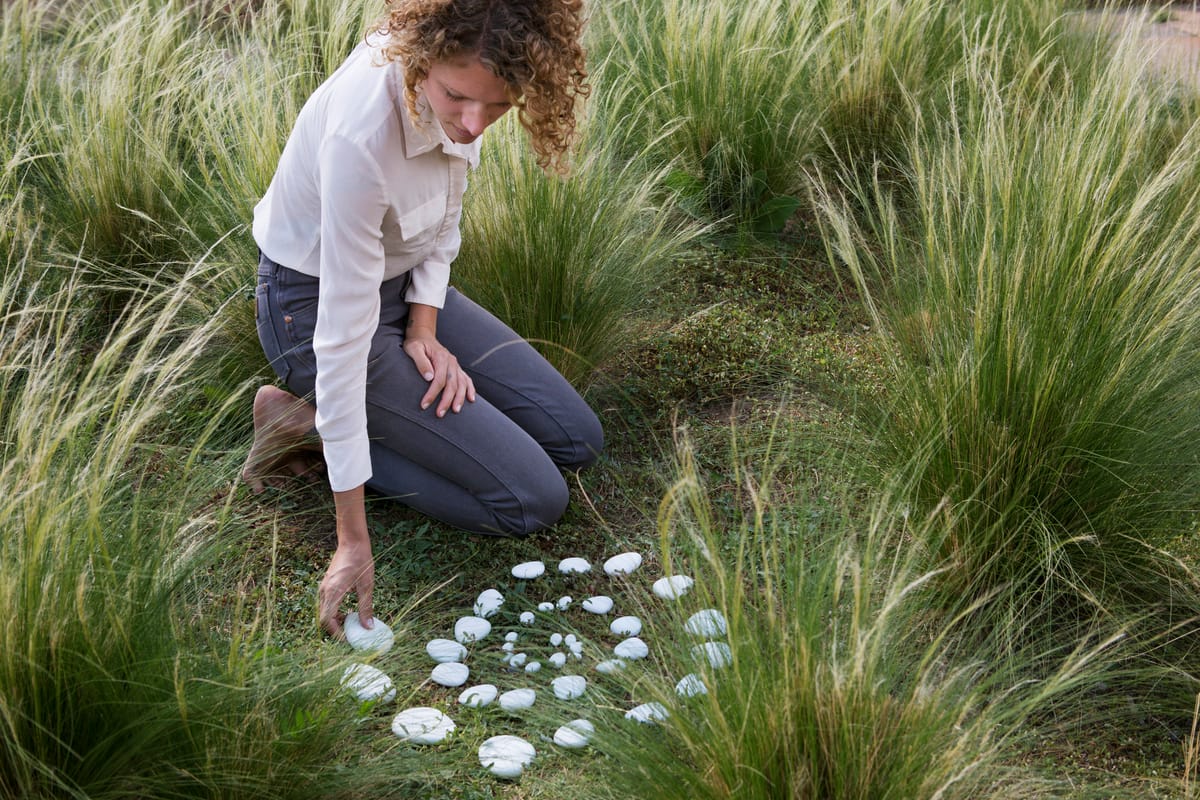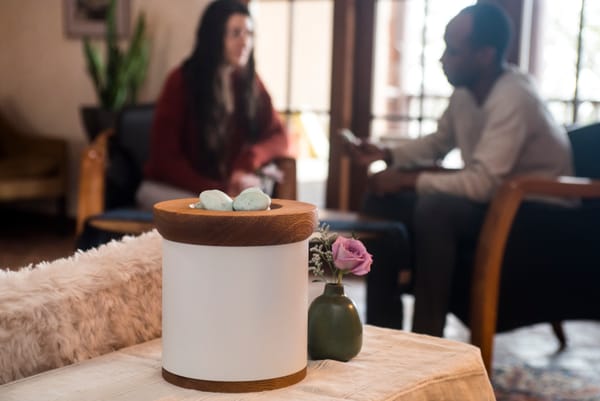Biodegradable Memorial Options: Balancing Environmental Values with Lasting Remembrance
When environmental consciousness meets the desire for permanence, choosing the right memorial becomes both deeply personal and beautifully complex. Many families find themselves navigating between honoring their loved one's eco-friendly values while creating a meaningful tribute that endures.

When environmental consciousness meets the desire for permanence, choosing the right memorial becomes both deeply personal and beautifully complex. Many families find themselves navigating between honoring their loved one's eco-friendly values while creating a meaningful tribute that endures.
The shift toward environmentally conscious end-of-life choices reflects our growing awareness of our impact on the planet, even after death. With cremation rates projected to reach 61.9% in 2024 and 82.1% by 2045 (National Funeral Directors Association, 2024), more families are seeking memorial options that align with environmental values. Yet for many families, the desire for a permanent, tangible connection to their departed loved one remains equally important. This creates a unique challenge: how do you honor both environmental values and the human need for lasting memorialization?
Understanding the full spectrum of biodegradable memorial options and their permanent alternatives empowers you to make a choice that feels right for your unique situation. Whether you're planning ahead or making decisions during grief, this comprehensive guide will help you navigate the complex landscape of eco-friendly and permanent memorial choices.
Reflections on love, loss, and the ways we carry them.
The rise of eco-conscious memorial choices reflects a deeper truth about grief: we long to honor our loved ones in ways that mirror both our values and our enduring bonds. While biodegradable urns, living memorials, and reef projects offer beauty and ecological integration, they sometimes leave families with the ache of impermanence.
On the other hand, permanent memorials like diamonds, glass art, or sculptures provide lasting comfort, yet may conflict with sustainability concerns. What becomes clear is that no single option fits every family—our grief, like our love, is deeply personal and layered.
The wisest path forward is to balance heart and conscience: to choose memorials that hold meaning while honoring the planet we leave behind. Because in the end, remembrance is not only about where the ashes rest, but how memory continues to root itself in the living.
Cathy Sanchez Babao
Parting Stone Grief Coach
The Challenge with Traditional Memorial Options
Many families discover that conventional memorial approaches leave them feeling conflicted about environmental impact or concerns regarding permanence. Traditional cremated remains present their own complications: scattered ashes can actually harm delicate ecosystems, while keeping ashes in urns often leads to what grief counselors call "ash anxiety," the stress of not knowing what to do with loose cremated remains.
Environmental Impact of Conventional Approaches
Research conducted at Los Alamos National Laboratories reveals that the scattering of traditional cremated remains significantly alters soil chemistry (Los Alamos National Laboratory, 2021). The study found that untreated human ash contains phosphates, calcium, potassium, and sodium at levels that can contribute to environmental issues, including salinity, eutrophication, and increased soil acidity (Carolina Memorial Sanctuary, 2023). Over an 18-month field study, soil exposed to scattered ashes showed substantial pH changes that could harm native plant communities.
Many families who choose scattering with environmental intentions often discover that they may inadvertently impact the ecosystems they intended to honor. Cremation ashes contain sodium levels 200-2000 times higher than plants can tolerate, with pH levels similar to those of bleach or oven cleaner (Mornington Green Legacy Gardens, 2023). This realization often leads to guilt and regret, particularly for environmentally conscious families who thought scattering was the most eco-friendly choice.
The Permanence Dilemma
On the other side of the spectrum, families seeking permanent memorials often struggle with the environmental footprint of traditional options. Mining operations for memorial sculptures, energy-intensive manufacturing processes for urns and monuments, and transportation emissions all contribute to an environmental impact that conflicts with many families' values.
This leaves environmentally conscious families in a difficult position: choose biodegradable options that may not provide the lasting connection they desire, or select permanent options that conflict with their environmental principles.

Understanding Biodegradable Memorial Options
Biodegradable memorial products have become popular choices for families who prioritize environmental consciousness. These options range from simple solutions to sophisticated biotechnology approaches, each with distinct benefits and considerations.
Water-Soluble Urns
Water-soluble urns dissolve when placed in water, releasing ashes into aquatic environments. Priced between $100 and $500, these urns offer an affordable way to conduct water scattering ceremonies. They're made from materials like salt, sand, or biodegradable paper, dissolving completely within hours or days.
- Benefits: Immediate environmental integration, ceremonial value, affordable pricing
- Considerations: Permanent loss of remains, potential water quality impact, weather dependency for ceremonies
Bio-Urns and Living Memorials
Bio-urns transform cremated remains into soil amendment for growing trees, plants, or other living memorials. These systems, ranging from $129-$400, combine ashes with specially formulated soil and seeds or seedlings. Companies like The Living Urn and Bios Urn have popularized this approach with sophisticated growing systems (The Living Urn, 2025).
However, success rates vary significantly. While companies like The Living Urn report positive outcomes using young trees rather than seeds to improve success chances (The Living Urn, 2025), general industry statistics indicate that tree memorial success rates can range from 30-70% depending on location, care, and environmental conditions (American Cemetery & Cremation, 2024). Factors affecting success include soil conditions, climate, ongoing maintenance requirements, and the natural challenges of establishing trees from cremated remains.
- Benefits: Creates a living legacy, carbon sequestration potential, and symbolic renewal
- Considerations: Variable success rates, location restrictions, long-term care requirements, limited portability
Memorial Reefs
Artificial reef systems incorporate cremated remains into concrete-like structures that support marine ecosystems. Organizations like Eternal Reefs create permanent underwater memorials, priced between $3,000 and $7,000. These reefs provide habitat for aquatic life while serving as a memorial to the deceased.
- Benefits: Marine conservation impact, permanent underwater monument, family diving opportunities
- Considerations: High cost, location limitations, accessibility challenges, and regulatory requirements
Biodegradable Scattering Containers
Simple biodegradable containers made from materials like bamboo, recycled paper, or cornstarch provide eco-friendly scattering options. Priced under $100, these containers dissolve naturally after scattering, leaving no permanent trace.
- Benefits: Minimal cost, maximum biodegradability, ceremonial flexibility
- Considerations: Complete loss of remains, no permanent memorial, limited ceremony options
The Permanent Memorial Alternative Spectrum
For families seeking lasting memorials while maintaining environmental consciousness, several permanent options offer varying degrees of eco-friendliness and memorial significance.
Traditional Urns with Sustainable Materials
Eco-conscious urn manufacturers now offer products made from recycled metals, sustainably harvested woods, or reclaimed materials. These urns, priced from $200-$2,000, provide permanent storage while minimizing environmental impact through material choices.
- Benefits: Permanent storage, sustainable materials, traditional approach
- Considerations: Ash anxiety issues persist, limited shareability, storage challenges
Memorial Diamonds
Companies like Eterneva and LifeGem transform carbon from cremated remains into synthetic diamonds. This process, which takes 6-10 months and costs $2,999-$50,000, depending on the size and company (Eterneva, 2025; Titan Casket, 2024), creates permanent gemstone memorials. The high-pressure, high-temperature process mimics the natural formation of diamonds.
- Benefits: Ultimate permanence, high emotional value, portability
- Considerations: Extremely high cost, long wait times, uses only small portion of remains, complex verification processes
Memorial Glass Art
Artisans incorporate small amounts of cremated remains into glass sculptures, jewelry, or art pieces. These custom creations, ranging from $150-$600, transform ashes into beautiful artistic memorials that can be displayed or worn.
- Benefits: Artistic expression, moderate pricing, personal customization
- Considerations: Uses minimal remains, fragility concerns, subjective aesthetic appeal
Memorial Sculptures
Some companies create memorial sculptures incorporating cremated remains into durable materials. These permanent installations, priced between $500-$5,000, provide lasting outdoor or indoor memorials.
- Benefits: Weather resistance, permanent installation, customization options
- Considerations: Location requirements, potential environmental impact from manufacturing
Environmental Impact Analysis: The Data Behind the Decisions
Understanding the actual ecological impact of different memorial options requires examining the complete lifecycle of each approach, from manufacturing through final disposition.
Biodegradable Options Environmental Footprint
While biodegradable urns score highly for end-of-life environmental integration, their production and distribution often carry hidden ecological costs. Manufacturing bio-urns requires energy for materials processing, packaging, and shipping. The success rate for bio-urns varies significantly based on soil conditions, climate, and care, with many memorial trees failing within the first two years.
Water-soluble urns eliminate manufacturing impact but may introduce cremated remains into sensitive aquatic ecosystems. Marine memorial reefs, while supporting ocean life, require concrete production and boat transportation, resulting in carbon emissions during their creation and placement.
Permanent Options Environmental Considerations
Permanent memorial options traditionally carried higher environmental costs, but innovations in materials and processes are changing this calculation. Memorial diamonds require intense energy for the high-pressure, high-temperature process, though they represent the most compact and permanent form of memorial possible.
Traditional sculpture memorials involve quarrying, transportation, and carving, creating significant carbon footprints. However, their permanence means the environmental cost is amortized over centuries or millennia of memorial value.
The Scattering Reality
Perhaps most surprisingly, traditional ash scattering (often perceived as the most environmentally friendly option) can create significant ecological disruption. The Los Alamos study demonstrated that scattered ashes substantially alter soil water chemistry over extended periods, potentially harming native vegetation and soil microorganisms (Los Alamos National Laboratory, 2021).
Psychological Factors in Memorial Decision-Making
Environmental consciousness and permanence desires represent logical considerations, but memorial decisions ultimately involve deep psychological and emotional factors that data alone cannot address.
The Connection Need
Grief counselors increasingly recognize that many people need tangible connections to their departed loved ones. This biological and psychological need for physical comfort objects helps facilitate healthy grieving processes. Biodegradable options, by design, eliminate this tangible connection over time, which can intensify grief for some individuals.
Sharing and Family Dynamics
Modern families often live geographically dispersed, creating challenges for single memorial locations or objects. The ability to share memorial items among family members can strengthen family bonds and provide comfort to multiple people. Most biodegradable options, being singular and consumable, cannot accommodate this sharing need.
Long-term Grief Processing
Grief processing often extends years or decades beyond the initial loss. Memorial choices made during acute grief may not serve long-term emotional needs. Permanent memorials allow for evolving relationships with memory over time, while biodegradable options create additional loss experiences as the memorial itself disappears.
Research in grief psychology suggests that tangible connections to deceased loved ones can play a crucial role in healthy grieving processes (HelpGuide, 2023). The ability to physically hold, visit, or interact with memorial objects provides comfort that purely symbolic or temporary memorials cannot match.
Regret and Permanence
Mental health professionals report that families who choose biodegradable memorials sometimes experience secondary grief when the memorial dissolves or dies. This "double loss" can complicate grief processing and create lasting regret about irreversible memorial decisions.
Cost Analysis: Investment vs. Value
Memorial costs extend beyond the initial purchase price to include long-term value, maintenance, and opportunity costs associated with different approaches.
Biodegradable Options Economics
Bio-urns appear affordable, ranging from $129 to $400, but their success rates significantly impact their actual value. With variable success rates, families may need multiple attempts or supplementary care services. Memorial trees require ongoing maintenance, including watering and protection, which creates long-term cost commitments.
Water-soluble urns offer the lowest initial costs but provide no lasting value or future memorial visits. Memorial reefs require substantial initial investment ($3,000-$7,000) plus travel costs for visits, making them accessible primarily to higher-income families.
Permanent Options Investment Analysis
Memorial diamonds command premium pricing ($2,999-$50,000) but create heirloom value that can be passed through generations (Titan Casket, 2024). The per-year cost over decades or centuries makes them economically competitive with other permanent options.
Traditional urns offer moderate initial costs ($200-$2,000) with no ongoing expenses, but provide limited emotional value for families experiencing ash anxiety. Memorial glass art provides artistic value at reasonable costs ($150-$600) but uses only small portions of remains.
The Value Question
A cost analysis must consider both emotional and spiritual value alongside financial investment. A $200 bio-urn that fails to grow provides less value than a $1,500 permanent memorial that serves family emotional needs for decades.
Making Your Decision: A Practical Framework
Choosing between biodegradable memorial options and permanent alternatives requires honest assessment of your family's values, emotional needs, and practical circumstances.
Values Assessment Questions
- Environmental Priority: How important is minimizing ecological impact compared to other memorial considerations? Are you comfortable with the environmental impact data for your chosen option?
- Permanence Desires: Do you or your family members need tangible, lasting connections to your loved one? How important is the ability to visit or hold memorial objects over time?
- Family Dynamics: How geographically dispersed is your family? Would multiple family members benefit from shareable memorial items?
- Financial Considerations: What is your realistic budget for both initial costs and potential ongoing expenses? How do you value long-term memorial benefits versus short-term cost savings?
Practical Decision Factors
- Location Constraints: Do you have suitable locations for living memorials or permanent installations? Are there legal restrictions on your memorial choices?
- Timing Pressures: Are you making this decision during acute grief, or do you have time for careful consideration? Can you delay irreversible choices until emotional readiness?
- Success Risk Tolerance: How would you feel if a biodegradable memorial failed to thrive or didn't develop as expected? Do you have backup plans for memorial failures?
- Long-term Perspective: How might your memorial needs change over years or decades? Are you choosing options that can adapt to changing family circumstances?
The Third Way: Solidified Remains as Environmental Permanence
Recent innovations in memorial technology have created new possibilities that bridge the gap between environmental consciousness and permanence desires. Solidified remains represent a complete alternative to traditional ashes, transforming the full amount of cremated remains into a collection of smooth, touchable remains.
This process, developed through scientific research at Los Alamos National Laboratory, addresses many of the challenges families face with both biodegradable and traditional permanent options. The solidification process creates remains that are permanent and shareable while being environmentally benign when scattered.
Studies comparing solidified remains to traditional ashes found that solidified remains had "little to no effect on soil water chemistry" even after extended exposure to natural elements (Los Alamos National Laboratory, 2021), making them a truly environmentally friendly option for families who choose scattering. Unlike traditional ash scattering, which can harm ecosystems, solidified remains integrate safely into natural environments without altering soil chemistry or harming plant life.
For families seeking permanence, solidified remains can be kept, displayed, shared among family members, or incorporated into other memorial projects. This flexibility addresses the sharing needs of modern families while eliminating the anxiety many people feel about traditional loose ashes.
At $2,495, solidified remains occupy the middle ground between basic biodegradable urns and luxury memorial diamonds, providing accessible pricing for comprehensive remains transformation. The 8-10 week processing time allows families to receive their memorial during the crucial early months of grief processing.
Conclusion: Honoring Both Values and Hearts
The choice between biodegradable memorial options and permanent alternatives ultimately reflects your family's unique values, needs, and circumstances. Environmental consciousness and the desire for lasting connection are both valid, important considerations that deserve thoughtful evaluation.
For families committed to biodegradable options, understanding success rates, environmental impacts, and emotional implications helps ensure your choice aligns with long-term satisfaction. For those seeking permanent memorials, newer options increasingly offer environmental responsibility alongside lasting remembrance.
Perhaps most importantly, remember that memorial decisions don't have to be either/or choices. Many families combine approaches, creating both biodegradable tributes and permanent keepsakes that serve different emotional and spiritual needs over time.
Your unique journey through grief and memorialization deserves choices that honor both your environmental values and your need for meaningful connection. Whether you choose biodegradable integration, permanent remembrance, or innovative alternatives like solidified remains, the most important consideration is creating a memorial that provides comfort, meaning, and appropriate honor for your loved one's memory.
In your own time, when you're ready, the right choice will become clear, one that respects both the planet we share and the love that endures beyond life itself.
References
- Green Burial Council. (2019, December 31). The environmental impact and potential human health risks of cremation. Retrieved from https://www.greenburialcouncil.org/environmental_impact_cremation.html
- Carolina Memorial Sanctuary. (2023, March 29). Cremated remains: Options for green burial & scattering. Retrieved from https://carolinamemorialsanctuary.org/cremated-remains-options-green-burial-scattering/
- Eterneva. (2025). Memorial diamond cost & pricing. Retrieved from https://www.eterneva.com/memorial-diamond-cost
- HelpGuide. (2023, November 3). Coping with grief and loss: Stages of grief and how to heal. Retrieved from https://www.helpguide.org/mental-health/grief/coping-with-grief-and-loss
- National Funeral Directors Association. (2024, July 25). U.S. cremation rate is projected to climb to 61.9% in 2024 [Press release]. Retrieved from https://nfda.org/news/media-center/nfda-news-releases/id/8944/us-cremation-rate-is-projected-to-climb-to-619-in-2024
- Mornington Green Legacy Gardens. (2023, June 20). What you need to consider before scattering cremation ashes. Retrieved from https://morningtongreen.com.au/what-you-need-to-consider-before-scattering-cremation-ashes/
- The Living Urn. (2025). Biodegradable urn trees: From ashes to living memorials. Retrieved from https://www.thelivingurn.com/
- Titan Casket. (2024, September 12). How much does it cost to turn ashes into a memorial diamond? Retrieved from https://titancasket.com/blogs/funeral-guides-and-more/how-much-does-it-cost-to-turn-ashes-into-a-memorial-diamond
- Los Alamos National Laboratory. (2022). 2022 Annual Site Environmental Report [general environmental impact]. Retrieved from https://www.osti.gov/biblio/2000889







